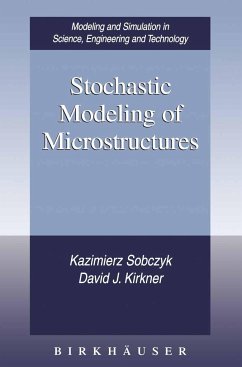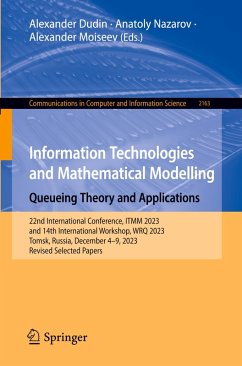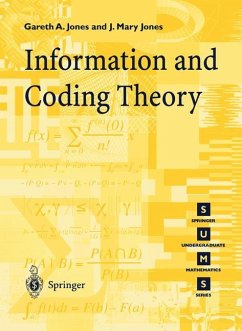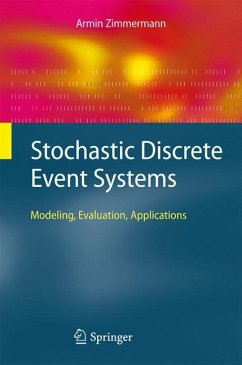
Probability, Stochastic Processes, and Queueing Theory
The Mathematics of Computer Performance Modeling
Versandkostenfrei!
Versandfertig in 1-2 Wochen
76,99 €
inkl. MwSt.
Weitere Ausgaben:

PAYBACK Punkte
38 °P sammeln!
This textbook provides a comprehensive introduction to probability and stochastic processes, and shows how these subjects may be applied in computer performance modelling. The author's aim is to derive the theory in a way that combines its formal, intuitive, and applied aspects so that students may apply this indispensable tool in a variety of different settings. Readers are assumed to be familiar with elementary linear algebra and calculus, including the concept of limit, but otherwise this book provides a self-contained approach suitable for graduate or advanced undergraduate students. The first half of the book covers the basic concepts of probability including expectation, random variables, and fundamental theorems. In the second half of the book the reader is introduced to stochastic processes. Subjects covered include renewal processes, queueing theory, Markov processes, and reversibility as it applies to networks of queues. Examples and applications are drawn from problems in computer performance modelling.
We will occasionally footnote a portion of text with a "__,, to indicate Notes on the that this portion can be initially bypassed. The reasons for bypassing a Text portion of the text include: the subject is a special topic that will not be referenced later, the material can be skipped on first reading, or the level of mathematics is higher than the rest of the text. In cases where a topic is self-contained, we opt to collect the material into an appendix that can be read by students at their leisure. The material in the text cannot be fully assimilated until one makes it Notes on "their own" by applying the material to specific problems. Self-discovery Problems is the best teacher and although they are no substitute for an inquiring mind, problems that explore the subject from different viewpoints can often help the student to think about the material in a uniquely per sonal way. With this in mind, we have made problems an integral part of this work and have attempted to make them interesting as well as informative.














